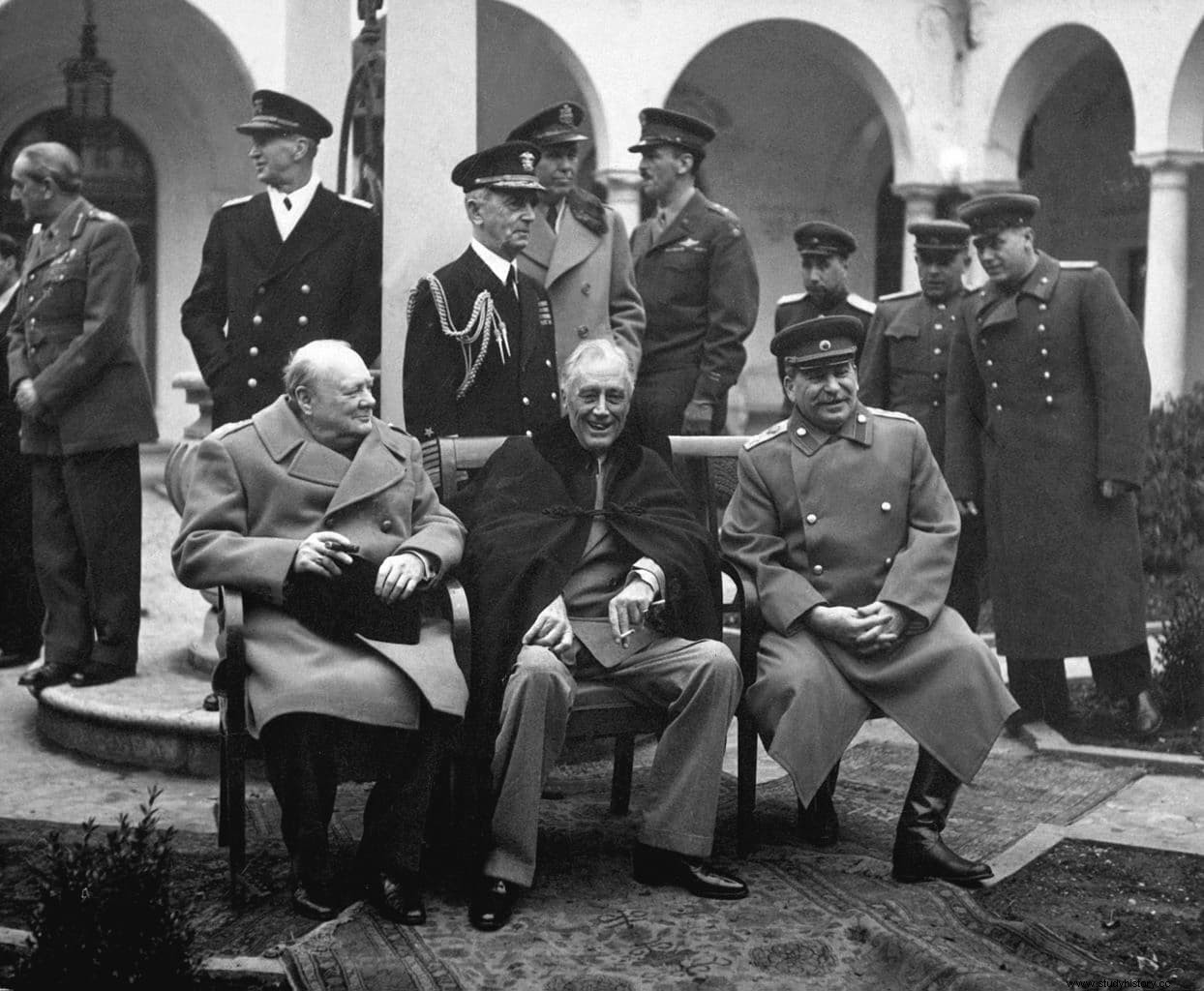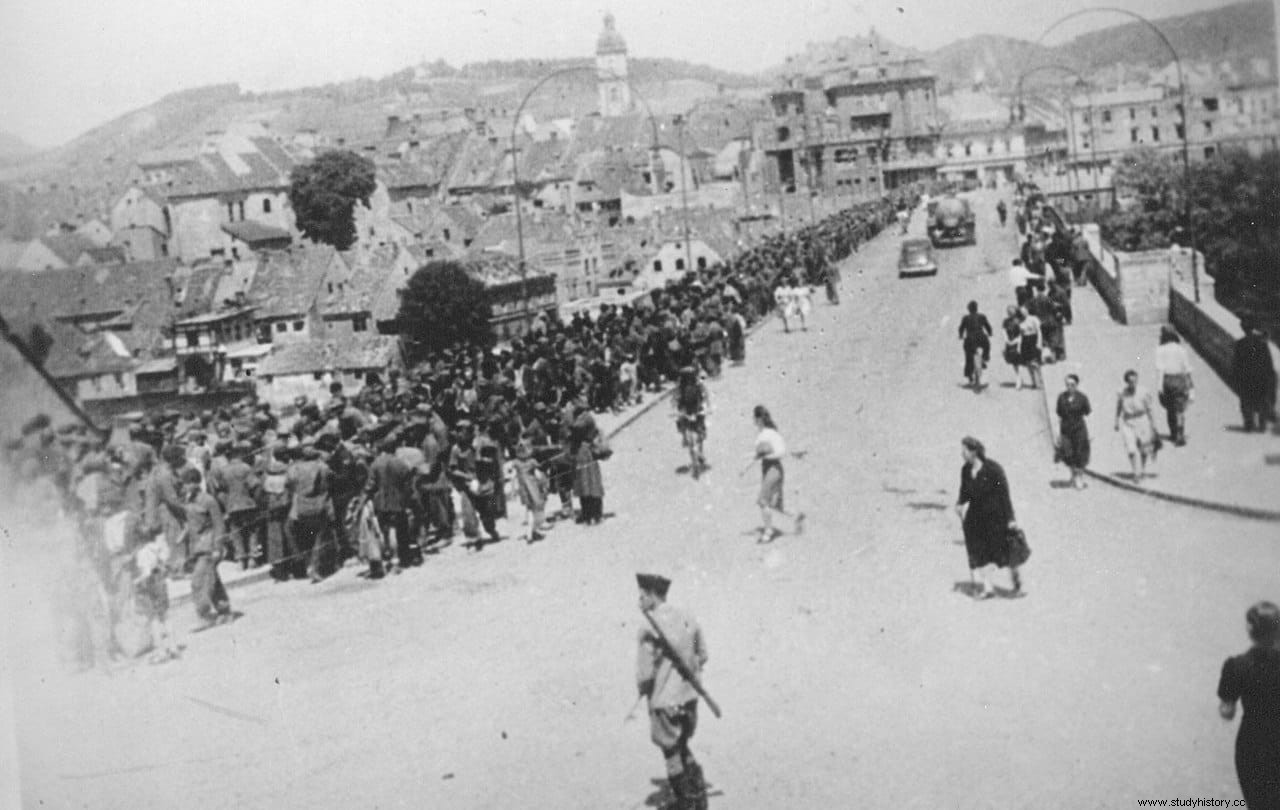In his work Gulag Archipelago , written between 1958 and 1967, Aleksandr Solzhenitsyn refers to an agreement reached between the participants in the Yalta Conference.
According to that agreement, after defeating Germany, the two blocs that were beginning to form as a prelude to the Cold Warwould return each other's prisoners of their respective countries that they liberated from the hands of the enemy.
The Russian writer described this pact as the last secret of World War II because it was not made public until decades later. Today it is known as Operation Keelhaul .

Keelhauling is the English term for what in Spanish was called going through the keel , that is to say, that punishment that was applied to sailors who committed a very serious infraction and consisted of throwing the inmate overboard tied to a rope that was pulled from the other side of the ship, so that the unfortunate passed under the keel facing a double problem:if they dragged it too fast it would be half destroyed by the molluscs adhering to the hull while if the process was too slow it would drown. In practice it was equivalent to the death penalty but due to its barbaric nature it was abolished in the mid-eighteenth century.
It is assumed that the name was chosen for that exchange of prisoners because they passed from one side to another , although the truth is that it was a bit sinister.
The Yalta Conference took place from February 4 to 11, 1945 with the attendance of Winston Churchill , Franklin D. Roosevelt and Iosif Stalin , as the respective heads of government of the United Kingdom, the United States and the USSR.
Given that the war was practically won and over (it would only last seven more months), what was discussed more than anything was how to manage the post-war :distribution of territories and areas of influence with their corresponding compensation, compensation to be demanded from Germany, Soviet intervention against Japan and even the creation of what would later become the United Nations.
One of the extra issues discussed was the repatriation of prisoners Allied war fighters who were liberated, not an easy task because they numbered many thousands.
The difficulty was double because, apart from the soldiers, Stalin demanded to also include refugees and displaced civilians , which raised the figure to almost two million people. The problem was that they were not consulted, since the commitment, embodied in a secret codicil signed on March 31, 1945, implied the forced transfer.
What interest did the Soviets have in bringing people to their country against their will? The explanation was that many of them were dissidents of communism , White Russians who had fought in the civil war against the Bolshevik Revolution (case of General Andrei Shkuro or Cossack hetman Piotr Krasnov) and even collaborators of the Waffen SS and the Ostlegionen (military units made up of volunteers from the countries that made up the USSR), including tens of thousands of Cossacks.
These had integrated a considerable part of the White Army, hence Trotsky began a campaign against them in the twenties. When Hitler began the invasion of the USSR, many joined him forming a division with their own uniforms and insignia, although they did not fight on their soil but in Yugoslavia and northern Italy, under the command of the Waffen SS and with manifest "savagery" , in the words of Stalin.
Those who fought in central Europe were interned in concentration camps. The case ofLienz , under British control, became famous because when the Cossacks discovered that, despite their word to the contrary, they were going to be deported to the Soviet Union, they rioted and the guards violently restrained them, forcing them onto trucks with rifle butts. «The NKVD or the Gestapo would have killed us with batons; the British did it on their word of honour” It was the tremendous phrase of one of the prisoners.
The thing was repeated in Judeburg, Graz and other places. British and American soldiers discovered to their horror that many of those men they began to surrender in August 1946 were summarily hanged almost at the moment of their reception, fundamentally commanders and officers, since the Soviets considered them traitors and many were also involved in war crimes .

It must be said that a good part of them did not have Soviet citizenship and therefore did not consider themselves such, but they also ended up confined in Siberia until Khrushchev granted them an amnesty. Approximately two million people were handed over, as there was also a significant amount of Ostarbeiter (Slavs used by the Nazis as slave laborers), multitudes of displaced civilians, and some 11,000 Croats of all ages and sexes. Deliveries were made in the part of Germany controlled by the USSR, in Austria, northern Italy and Slovenia.
In that last country, at that time one of the regions that made up Yugoslavia , was where the so-called Bielburg Massacre occurred. , which took place in May 1945 in the town of the same name and led to the death of around fifty thousand Croatian Ustaše fighters who supported the establishment of the self-proclaimed Independent State of Croatia (a puppet fascist state of Hitler's Germany).
Next to them, chetniks Montenegrins (ultra-conservative guerrillas led by monarchist and anti-communist Colonel Dragoljub Mihajlović), domobranci Slovenians (literally home defenders, militants of the Slovenian National Guard, a Catholic paramilitary body financed by the Nazis) and Bosnian Muslims in the service of the Germans, responsible for committing authentic atrocities; all fell, either at the hands of Tito's partisans, or during the hard transfer marches. It is estimated that there are five hundred and forty mass graves in Slovenia. corresponding to that episode.
The last deliveries of prisoners were made in St. Valentin, Austria, on May 8 and 9, 1947 , in what was internally called Operation East Wind , and affected a thousand Russians from the allied concentration camps in Italy:Bagnoli, Aversa, Pisa and Riccione.
Paradoxically, it ran parallel to Operation Fling , with which dissidents and deserters were helped to flee the Soviet Union. Because at that point, as we said before, the Second World War had ended but the Cold War was beginning. and British intelligence services were already holding and sheltering anti-communist prisoners.
OperationKeelhaul remained hidden until a journalist named Julius Epstein (a descendant of composer Johan Strauss II, by the way) stumbled upon the matter when he came across some classified archival records while working for the Hoover Institution in 1954.
Epstein was an Austrian of Jewish origin who fled Europe in 1938 and settled in New York. A convinced anti-communist, he plunged into a twenty-year investigation which led him to sue the US government to declassify the documentation on the subject. That work was published in 1973 under the title Operation Keelhaul, paving the way for other authors.
